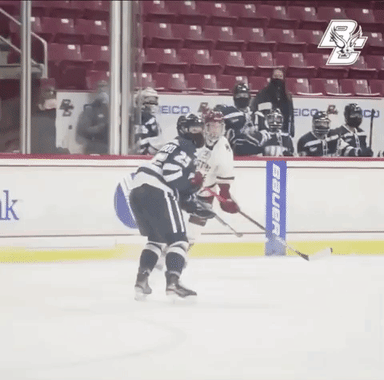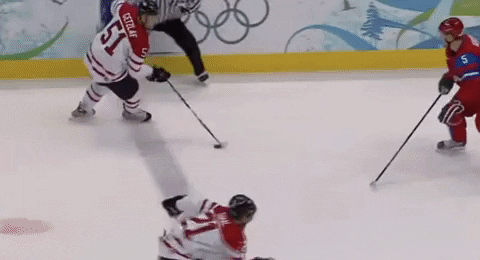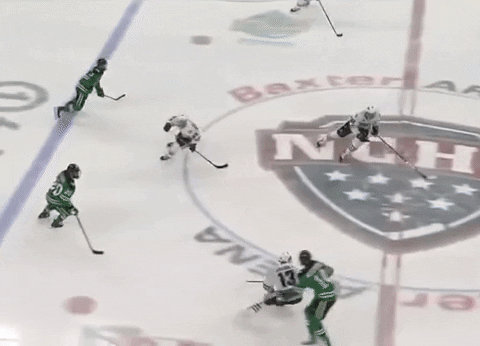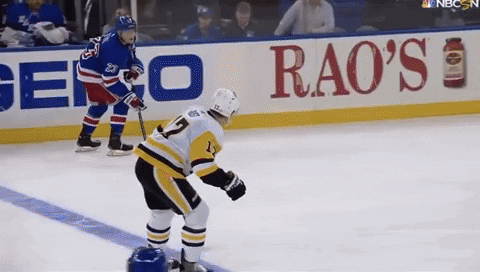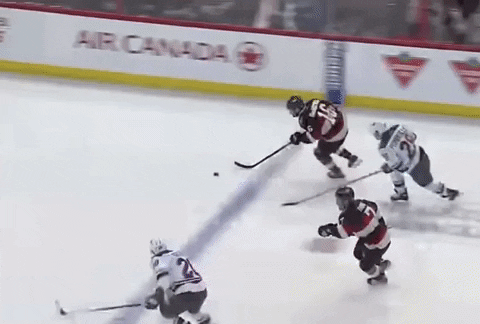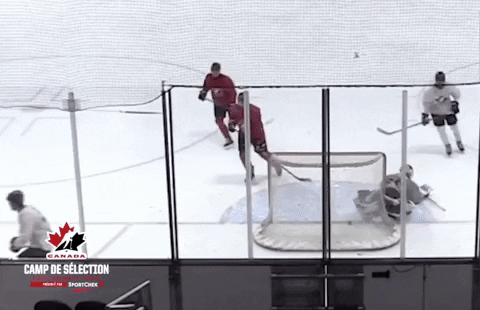Everyone loves the saucer pass. It.. just… looks… so… beautiful…
When BC’s Willow Corson executed this picture-perfect saucer pass in late November, hockey Twitter was abuzz, and for good reason.
Related: Saucer Pass Technique
But looks can be deceiving. And while we’ll happily acknowledge the brilliance of this pass, we’re here to help dissuade players from leaning too heavily on this pass.
High-Risk Pass
As fun as saucer passes are to see, the reality is that saucer passes are high-risk plays. Even Jack Eichel, who is clearly having a bit of fun with the situation, agrees.
From the passer’s standpoint, the proper amount of touch needs to be applied. Even at the NHL level, errant passes lead to icings with regularity. From the recipient’s point of view, pucks can bounce, kick, or spin. Add in the defenders’ stick and there are quite a few things that can go wrong here. Most of the time a saucer pass is a poor pass selection for a given situation.
Pass Selection
Each game situation calls for a different pass and there are a variety of passes that accomplish the same thing. With each type of pass, there is a corresponding risk/reward profile. Players are responsible for picking the best pass type for the given situation.
Often, a saucer pass is the high-risk solution for the presented game situation. Think ahead also consider the player catching the pass. We want to be putting the pass receivers in the best situation possible to make the next play or shoot.
There is a huge variety of passing selections that most players either fail to recognize are available or, just as bad, fail to utilize in game situations. These passes are critical to add to your toolbox. Understanding each pass is the first step towards proper pass selection. Let’s dive in.
Triangle Passes
Triangle passes are passes in which players are problem-solving the “triangle” of the defender that is created between the defender’s skate toe caps and stick blade.
Slip Pass = The passer pulls the puck tight to their body in order to slide the puck underneath the opponent’s triangle.
Hook Pass = Passer pushes the puck farther away from themselves, then hook their wrists to snap the puck through the triangle.
Area Passes
Area Pass = The passer spots the puck into an area of the ice currently unoccupied, but allows the receiver the space to skate to that area.
Leading Pass = A type of area pass that leads a teammate into open ice. This is a great way for high hockey IQ players to help teammates see passes.
Bank Pass = Off the wall to a teammate. This could be to a leading or trailing teammate.
Indirect = A pass sent indirectly to the pass receiver. In this example, the passer puts the puck behind the player off the boards, knowing TOR88 can skate into space.
Dump/Bank to speed = Similar to the indirect example, this type of pass requires two players to be on the same page, as the receiver will be building up speed. Meanwhile, the passer must recognize and place the puck in a spot where his teammate can get to the puck first.
Drop Pass = A softly executed backward pass that a teammate with speed can pick up. (Note: could also be a “leave” pass, where the passer appears to forget to bring the puck with him/her.)
Punting = Over the top of the defense. Sometimes meant to clear the pressure in the defensive zone, sometimes (like below) utilized as an offensive tactic.
Deceptive Passes
No-Look Pass = The passer does not look at the pass receiver.
Spin-O-Rama = You know what it is. And it’s so beautiful.
One-Hand Pass = A passer reaches with one hand on the stick to protect the puck from a defender, while simultaneously finding a passing lane.
Between the legs = Pulling the puck between your legs to change the angle of the pass.
Skate Pass = maybe your handedness is wrong for between the legs.. you still have a skate to kick with.
Fake Drop Pass = Same set up as a drop pass, but instead the puck is kept.
Going beyond
We’re not suggesting that a saucer pass should be eliminated from your game. Our argument is that an overreliance on saucer passes often indicates a lack of problem-solving capabilities in a modern player. Instead, players should be encouraged to explore and use their creativity to put their own expression into a variety of dangerous and equally effective passes.
Greg loves to use the stick-to-skate-to-stick fake drop pass (think Pavel Bure kick goal). I’ve found it especially effective around the top of the elbow when crossing with a teammate. Often, the (beer league) defender will bite and double-guard my teammate, thus giving me a clear path to the net. Dan, on the other hand, prefers to exploit a defender’s triangle through slip and hook passes.
The examples presented in this post are just scratching the surface … What additional types of passing skill expressions come to your mind?
Further Reading
Did you enjoy this newsletter?
Help us spread the ideas within and share it with the people you care about


